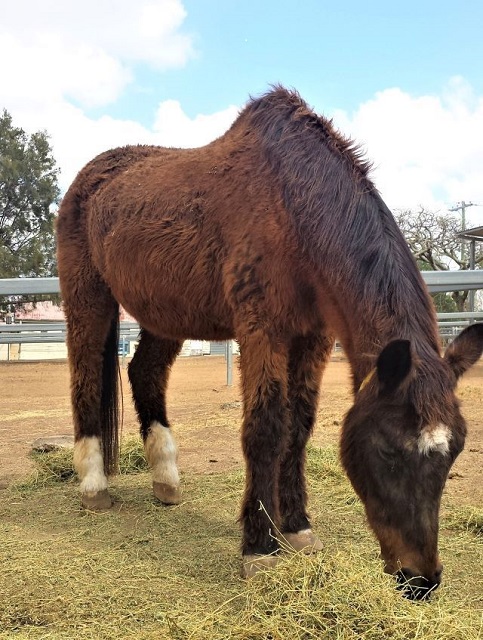What is Pituitary pars intermedia dysfunction (PPID)?
Pituitary pars intermedia dysfunction (PPID) is an endocrine disease which affects a horse’s pituitary gland.
It is similar to Cushing's disease in people and dogs. Problems associated with the condition can include:
- a long-haired coat

Horse with a long-haired coat, a sign of PPID. - delayed hair coat shedding
- weight loss
- frequent urination
- laminitis (founder)
- recurrent infections such as foot abscesses, skin infections or pneumonia.
In Queensland, PPID is found in 20 per cent of horses aged 15 years or older. Most of these horses experience changes in their coat but only some have laminitis and weight loss.
Learn about the signs your horse's laminitis may be due to PPID and how vets test and treat it.
Diagnosis
- If your horse is showing clear signs of PPID, we'll diagnose the condition by carrying out a blood test to determine its ACTH concentration.
- When it is less clear, we offer a sensitive testing procedure (ACTH response to TRH stimulation) to help detect early disease in your horse.
- By diagnosing and treating PPID early, we can prevent serious consequences such as laminitis.
Treatment
Geriatric horses can become useful athletes with successful treatment.
- A drug called pergolide is used daily to control signs of PPID.
- Horses need increasing doses of pergolide as they age to keep hormone concentrations normal and the signs under control.
- Annual blood tests are recommended to ensure PPID is adequately treated.
- If your horse with PPID still has a hairy coat, their pergolide dosage may be inadequate.
- Many horses with PPID also have insulin dysregulation and require special low sugar diets insulin is also tested.
